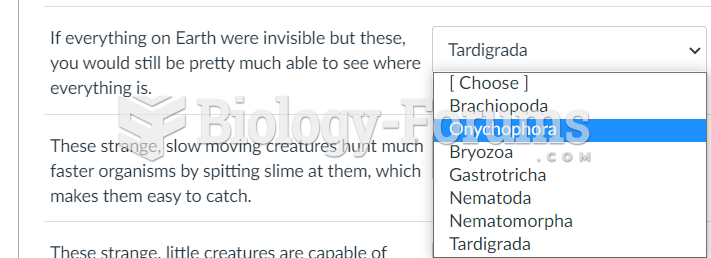Select the correct IUPAC name for the following molecule.

1.pentylpropylnitri
le
2.4-cyanooctane
3.5-cyanooctane
4.2-propylhexanenitrile
5.2-butylpentanenitrile
Question 2The structure for oleic acid is shown below. What is the IUPAC name of this compound?

1. cis-octadecenoic acid
2. (Z)-octadec-9-enoic acid
3. (Z)-octadecyl-9-en-1-oic acid
4. (Z)-octadecen-9-oic acid
5. (Z)-9-octadecylenoic acid
Question 3What is the IUPAC name for the following carboxylic acid?

1.2-propylhexanoic acid
2.4-propylhexanoic acid
3.2-butylpentanoic acid
4.4-carboxyoctane
5.5-carboxyoctane
Question 4What is the IUPAC name for the following carboxylic acid?

1.3-bromo-4-methylbenzoic acid
2.4-methyl-3-bromobenzoic acid
3.phthalic acid
4.4-carboxy-2-bromotoluene
5.5-carboxy-2-methyl-1-bromobenzene
Question 5What is the IUPAC name for the following carboxylic acid?

1.benzoic acid
2.1-cyclohexenoic acid
3.2-cyclohexenoic acid
4.1-cyclohexenecarboxylic acid
5.2-cyclohexenecarboxylic acid
Question 6Which of the following is not an acyl derivative?
 Question 7
Question 7Which combination of reagents will yield the compound at right?

1.

2.

3.

4. Both (1) and (2)
5. Both (2) and (3)
Question 8Select the starting material used to make the acetal at right.

 Question 9
Question 9Which of the following represents an acetal?
 Question 10
Question 10Rank the following carbonyl compounds from most to least reactive when treated with a nucleophile.

1. A > C > B > A
2. C > B > A > D
3. A > B > C > D
4. A > C > B > D
5. C > B > D > A
Question 11What is the correct functional group assignment for each of the following nitrogen-containing compounds?








